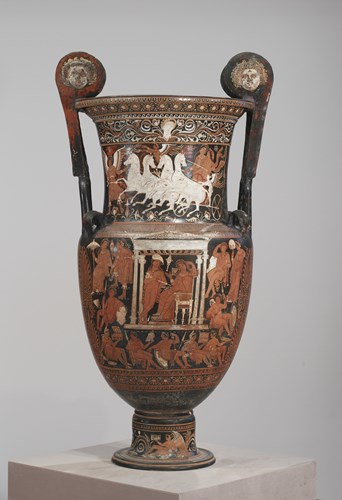Kore
The Orphic Hymns and the Orphic Gold Leaves serve as indisputable evidence that Persephone was one of the most important deities in Orphism. But Persephone is substantially different in the Orphic tradition than her portrait in the Homeric Hymn to Demeter. First, the Orphics believed that she was the daughter of Zeus and Rhea, his mother. Then she mated with her father and gave birth to Dionysus, Zagreus, Iacchus, and Melinoe, the only daughter. Zeus, in fact, came to the Underworld and impregnated her with the child that would become his successor. The baby was Dionysus, but the Titans dismembered him at a very young age. He was reborn as the second Dionysus, the one famous for wandering the earth spreading his mystery cult until the time comes for him to ascend to the heavens. The first Dionysus is sometimes called Zagreus, but the tragedian Aeschylus considered Zagreus an alternate name for Hades or his son by Persephone.
Then, as Kore, Persephone is the universal goddess of nature with the capacity to produce and destroy everything. Finally, this bewildering and benevolent dichotomy enabled people to identify Persephone with many other deities, including Isis, Rhea, Ge, Hestia, Pandora, Artemis, and Hecate. All these identities notwithstanding, for most believers, Persephone was the queen of the Underworld and one goddess whose benevolence would make all the difference in the world. The Orphic Gold Leaves were tablets with verses buried with the dead to help them navigate the horrifying path to a better afterlife. The leaves often invoke Persephone (along with Demeter and Eukles, which may be another name for Hades) as the Chthonian Queen in whose peplos the dead can hope to dive, much like a child will seek the safety of its mother’s embrace. The dead who departed this life with a golden leaf knew precisely where they hoped to end up: the sacred meadows and groves of Persephone where, hopefully, they would be received and sheltered by her and enjoy a happy ever after.
Hermes and Persephone in the Underworld (?), Baltimore Painter, ca. 320-310 BCE, vessel, The Walters Art Museum © The Walters Art Museum





